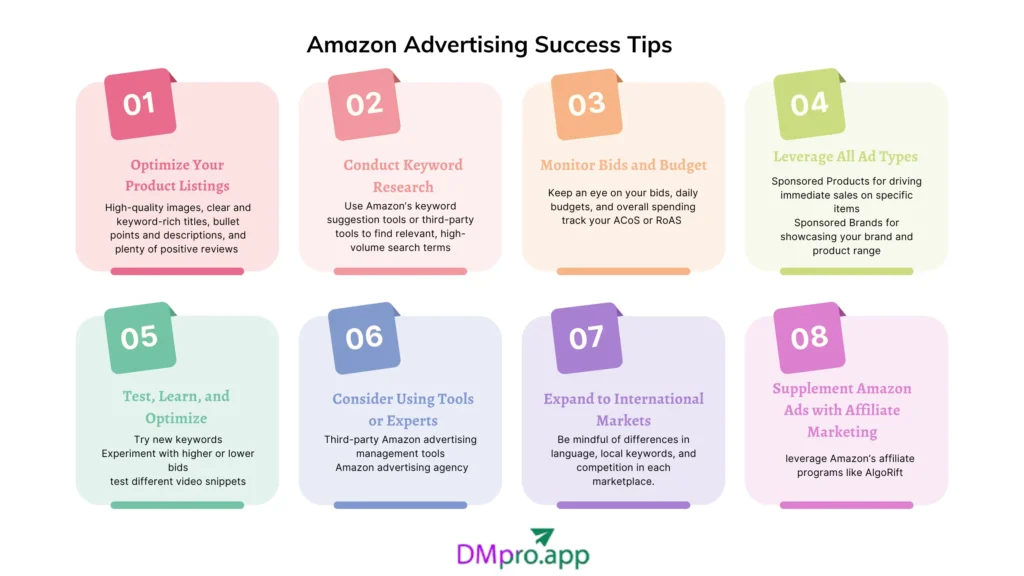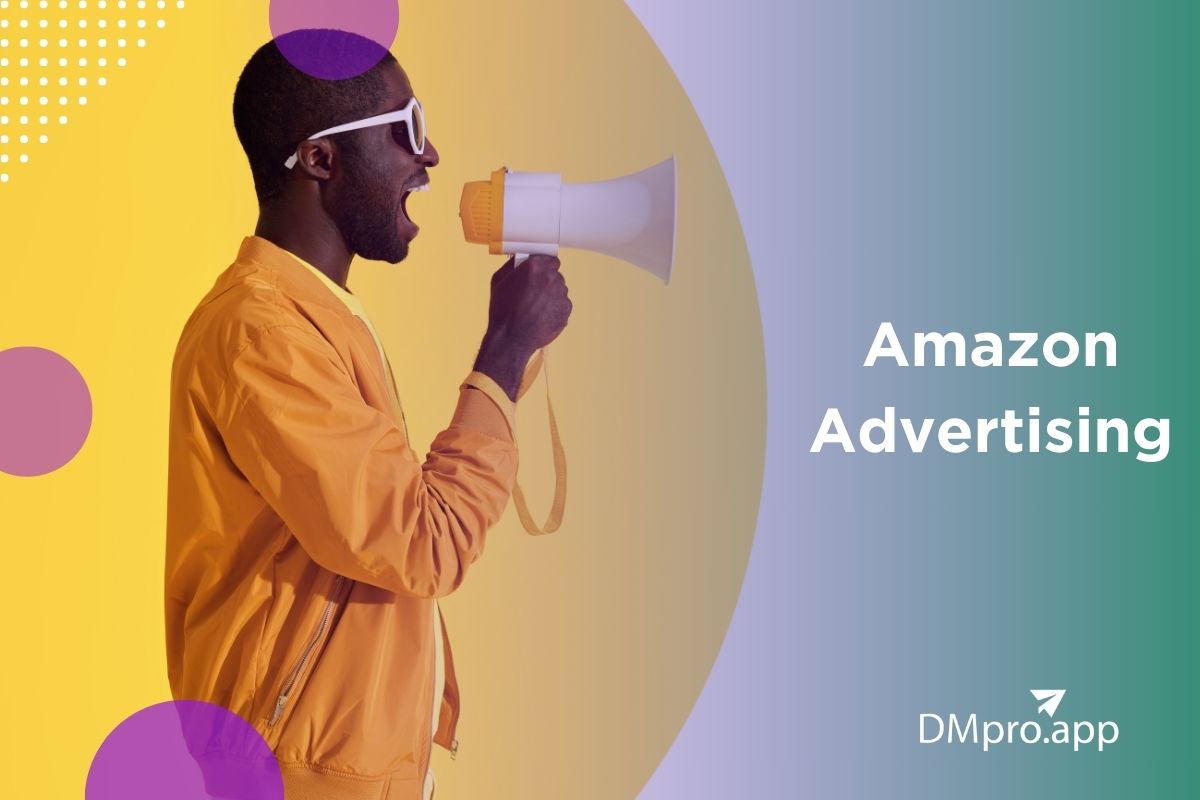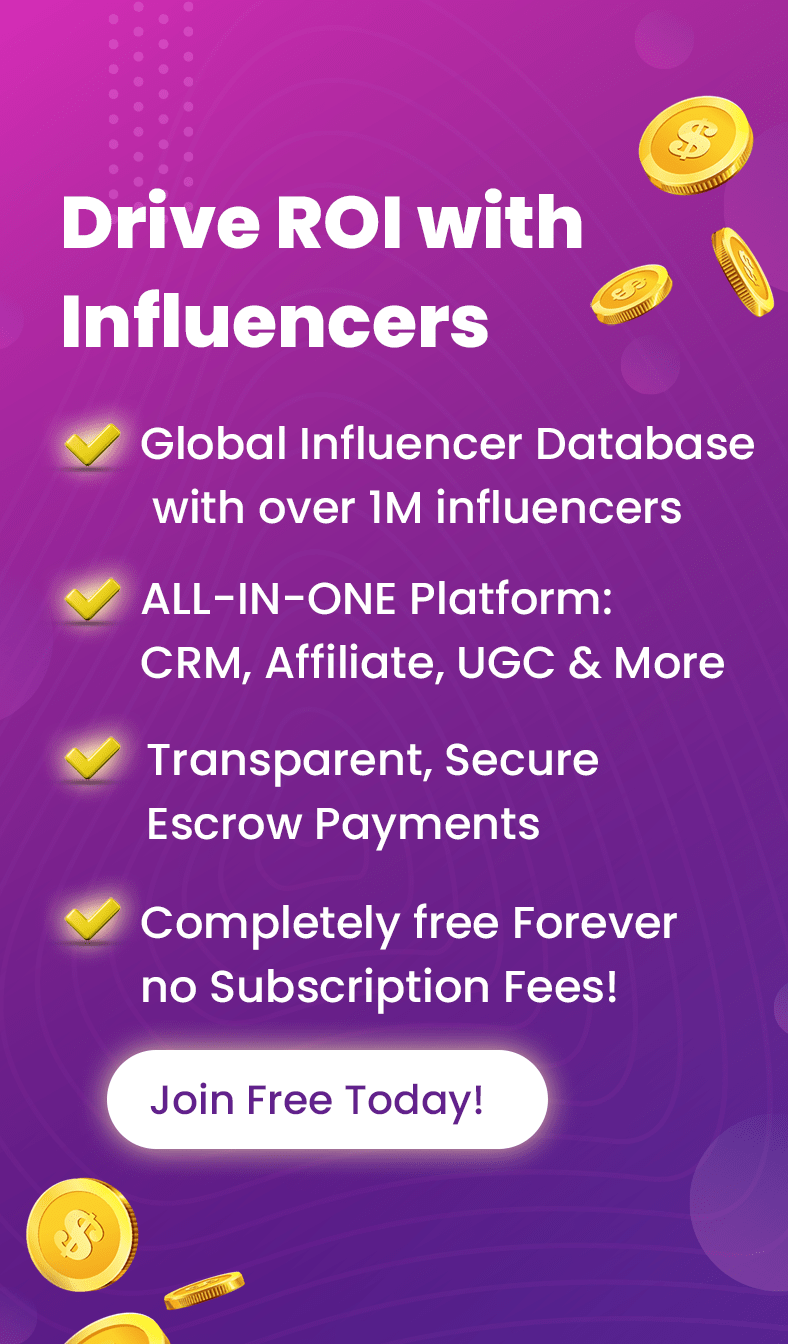Ever searched for something on Amazon and noticed those “Sponsored” product listings at the top? That’s Amazon Advertising in action! It’s Amazon’s way of helping businesses promote their products to millions of shoppers—and it’s a big deal.
With ad revenue hitting a massive $56.22 billion in 2024, Amazon is now the third-largest digital advertising platform, right behind Google and Meta.
These days, running ads on Amazon isn’t just an option; it’s pretty much a must. In fact, around 79% of small-to-medium Amazon sellers use ads to boost their visibility and sales.
So, how does it all work? In this guide, we’ll break down Amazon Advertising, the different types of ads you can run, and how to create a strategy that actually gets results. Plus, we’ll show how Amazon affiliate marketing tools like AlgoRift can enhance your Amazon marketing efforts.
Table of Contents
ToggleWhat is Amazon Advertising?
Amazon Advertising (formerly Amazon Marketing Services) is a pay-per-click (PPC) platform that helps sellers and brands promote their products. You bid on keywords or target audiences to get your ads seen in search results, product pages, and beyond Amazon.
It actually works like Google Ads—you set up campaigns, choose keywords or product targets, and pay per click—but with one big advantage: Amazon shoppers are already looking to buy.
There are different Amazon ad types depending on your goals:
- Sponsored Products – These appear in search results and product pages.
- Sponsored Brands – Promote multiple products and boost brand awareness.
- Sponsored Display & Video Ads – Retarget shoppers on and off Amazon.
Since these ads blend into the shopping experience, they’re highly effective at driving sales. Whether you’re a small seller or a big brand, Amazon ads help you get in front of the right customers at the right time.
Benefits of Amazon Advertising
Why should businesses invest in advertising on Amazon? Here are some key benefits of using Amazon Advertising services to grow your Amazon business:
1. Reach High-Intent Shoppers
Amazon isn’t just any platform; it’s where people go when they’re ready to buy. Ads put your products in front of shoppers actively searching for items like yours, leading to higher conversion rates than general web advertising.
2. Increase Product Visibility
With so much competition, ranking organically can be tough. Amazon ads push your products to top spots in search results and product pages, making them harder to miss and easier to sell.
3. Boost Sales & Organic Ranking
More visibility = more sales. And more sales can improve your organic ranking since Amazon’s algorithm favors products with a strong sales history. In competitive niches, running ads can help you gain market share over competitors.
4. Control Costs & Maximize ROI
Moreover, Amazon ads run on a pay-per-click (PPC) model, so you only pay when someone clicks. You can set budgets, control bids, and optimize campaigns in real-time to keep costs in check and improve ad performance.
5. Choose from Different Ad Formats
Whether you want quick sales (Sponsored Products), brand awareness (Sponsored Brands), or retargeting (Sponsored Display), Amazon offers ad types for every goal.
6. Get Data-Driven Insights
More importantly, Amazon provides reports on impressions, clicks, conversions, and ROI so you can see what’s working. These insights don’t just help with ads—they can also guide your SEO, pricing, and product decisions.
Different Types of Amazon Advertising
Before we show you how to make the most of your Amazon ads, let’s know about the main types of Amazon Advertising and how they work:
1. Sponsored Products
Sponsored Products are Amazon’s most popular ads, designed to promote individual product listings. These pay-per-click (PPC) ads appear in search results and on product pages, blending in with organic listings (except for a small “Sponsored” tag).
Here’s how Amazon’s sponsored products work:
- You choose a product to advertise.
- You bid on relevant keywords (or let Amazon handle it).
- When a shopper searches for a matching term, your ad appears.
- If they click, they land on your product page.
These ads are great for boosting sales fast by getting your product in front of the right shoppers. For example, if you’re selling coffee makers, you can bid on “coffee maker” to appear at the top of search results.
Remember, sponsored products use a cost-per-click model, meaning you only pay when someone clicks. They’re available to sellers with a Professional Amazon Seller account and vendors using Vendor Central.
2. Sponsored Brands
Amazon’s Sponsored Brands are banner-style ads that promote your brand and products at the top of Amazon search results. They include your logo, a custom headline, and a few featured products. Some also appear as video ads in search results.
These ads are perfect for brand awareness and encouraging shoppers to explore your product line or the Amazon Store. To use them, you must be Brand Registered on Amazon.
For example, if you sell kitchen appliances, your Sponsored Brands ad might showcase your brand logo, tagline (“Quality Kitchen Solutions”), and best-selling products when shoppers search for “blender” or “coffee maker.”
Clicking the ad takes them to your Amazon Store or a custom landing page. This ad type helps with both sales and brand-building.
3. Sponsored Display
Sponsored Display ads help you reach shoppers on and off Amazon. Unlike Sponsored Products and Sponsored Brands, these ads don’t target keywords—instead, they target shoppers based on their browsing behavior and interests.
They can appear on Amazon (product pages, the homepage) or even on external websites and apps within Amazon’s ad network. You can use them to retarget shoppers who viewed your product (or similar ones) but didn’t buy—reminding them to come back and complete the purchase.
Available to Brand Registered sellers and vendors, these ads are an easy way to start display advertising without needing much experience. Just choose your audience or product category, set a bid, and let Amazon handle placements.
4. Amazon DSP (Programmatic Display)
Amazon DSP (Demand-Side Platform) is for brands that want to run high-scale display and video ads both on and off Amazon.
Unlike sponsored ads, DSP allows you to programmatically buy ad placements on Amazon-owned sites (like IMDb and Fire TV) and third-party websites/apps, using Amazon’s shopper data for precise targeting.
Amazon DSP is mainly for larger brands with bigger budgets, as it offers a managed service (with a minimum spend) or a self-serve option for experienced advertisers.
DSP is also great for brand awareness and retargeting, making it a solid option when you’re ready to expand beyond Amazon’s marketplace.
5. Amazon’s Affiliate Advertising Program (Amazon Associates)
Amazon also has an affiliate program called Amazon Associates, where independent publishers (like bloggers, influencers, and comparison sites) can promote Amazon products on their websites or social media.
They earn a commission for sales they drive, which helps increase traffic and sales to your listings. While you can’t directly manage affiliate marketing through Amazon’s ad console, you can partner with affiliates to promote your products.
8 Winning Strategies for Successful Amazon Advertising
Getting started with Amazon ads is one thing – mastering them is another. Here are some best practices and strategies for Amazon affiliate marketing to help you maximize your Amazon advertising performance:

1. Optimize Your Product Listings First
Before pouring money into Amazon ads, ensure your product detail pages are fully optimized. High-quality images, clear and keyword-rich titles, bullet points and descriptions, and plenty of positive reviews will improve your conversion rate on Amazon.
Amazon advertising will send shoppers to your listing, but whether they purchase depends on how compelling your page is. This optimization is a cornerstone of Amazon’s online marketing and advertising – ads plus great content equals success.
2. Conduct Keyword Research & Target it strategically
A strong Amazon advertising strategy starts with bidding on the right keywords. Use Amazon’s keyword suggestion tools or third-party tools to find relevant, high-volume search terms that shoppers use.
Then, incorporate these keywords into your Sponsored Products and brand campaigns. You can start with an automatic targeting campaign (Amazon will match your ads to relevant searches) to gather data, then refine with manual campaigns targeting the best-performing keywords.
Also, don’t forget to add negative keywords to eliminate irrelevant queries and save budget. In addition, consider product-targeting ads to place your Amazon marketing ads on competitors’ product pages (via Sponsored Display or Sponsored Products Product Targeting) – this can steal visibility from rival products.
3. Supplement Amazon Ads with Affiliate Marketing
As mentioned earlier, leveraging Amazon’s affiliate program can amplify your reach beyond what you achieve with on-site ads alone.
Recruiting affiliates (Amazon’s affiliate program members) to promote your products can drive external traffic to your Amazon listings, which not only can increase sales but might also improve your organic rank due to the sales boost.
How to Connect with Top Affiliates?
If you want to level up your Amazon Advertising, consider partnering with top affiliates through a platform like AlgoRift. AlgoRift helps you find high-performing content creators and publishers (among 100K+ affiliates) who can promote your Amazon products on blogs, YouTube, social media, and more.
By combining AlgoRift’s affiliate-driven marketing with your existing Amazon PPC campaigns, you can maximize exposure across both paid and organic channels.
This way, you’re not just relying on Amazon ads—you’re getting additional, targeted traffic through affiliates, which can lead to more sales and higher rankings.
The best part? You only pay affiliates a commission when they successfully drive a sale, making this an affordable and effective way to enhance your Amazon advertising strategy.
Why You Should Choose AlgoRift Over Amazon Associates?
AlgoRift not only excels in leading platforms like Levanta or Awin but also offers the following benefits over Amazon Associates:
- Higher Commissions: AlgoRift offers higher, performance-based commissions (10-40%), while Amazon Associates has lower, fixed rates (1-10%).
- AI Matching: AlgoRift uses AI to optimize product selection, unlike Amazon Associates’ general product pool.
- Tailored for Amazon: AlgoRift focuses specifically on boosting Amazon affiliate revenue, unlike Amazon Associates’ broader range.
4. Monitor Bids and Budget (Manage Costs)
Keep a close eye on your bids, daily budgets, and overall spending to control Amazon advertising costs. Amazon ads operate on auction dynamics, so find a bid that gets you impressions without overspending.
It’s important to adjust bids based on performance – increase bids on high-converting keywords and decrease or pause those that are unprofitable.
Additionally, track your ACoS (Advertising Cost of Sales) or RoAS (Return on Ad Spend) to ensure your campaigns are meeting targets. So, if a keyword is spending too much time without results, refine it or add it as negative.
Note that utilizing Amazon’s dynamic bidding options (like down-only bidding or setting placement multipliers for top-of-search) can also help optimize spending for better results.
Essentially, treat it as an ongoing process of advertising management – if you actively manage it, you can achieve a lower cost for better output.
5. Leverage All Ad Types for Full Funnel
Without a doubt, each Amazon ad type has its strengths, so use a mix to cover the full marketing funnel.
For example, use Sponsored Products for driving immediate sales on specific items (the bottom funnel), Sponsored Brands for showcasing your brand and product range (mid funnel, some brand awareness), and Sponsored Display or DSP for retargeting and awareness (upper funnel and re-engagement).
By diversifying, you create multiple touchpoints with customers. Someone might first see your Sponsored Brands banner (learning about your brand), later see a Sponsored Product ad for one of your items (and click to buy), and even be retargeted by a Sponsored Display ad if they didn’t purchase.
This layered approach is a robust Amazon advertising strategy that maximizes your reach and conversion chances.
6. Test, Learn, and Optimize Continuously
One of the biggest advantages of Amazon’s advertising platform is the real-time feedback. To use it to your benefit, continuously test different approaches, for example:
- Try new keywords,
- Experiment with higher or lower bids and test different ad creatives (for Sponsored Brands, you can test headlines or images, for instance),
- If you’re running Sponsored Brands Video ads, test different video snippets,
- Don’t forget to analyze your advertising reports at least weekly,
- Look at which campaigns or keywords are driving sales and which are not. Optimize by reallocating the budget to top performers, pausing, or tweaking underperformers.
Over time, these incremental optimizations can dramatically improve your results (e.g., lowering ACoS or scaling up sales without raising spending proportionally).
7. Consider Using Tools or Experts
Managing Amazon advertising can become complex as you add more products or campaigns. If it becomes overwhelming, you have options.
Amazon’s interface provides some automation (like automated campaigns and bid suggestions), but you can also use third-party Amazon advertising management platforms, Amazon seller tools, or even hire an Amazon advertising agency if your budget allows.
An agency or Amazon advertising management services can help handle the day-to-day tuning of campaigns, implement advanced strategies, and keep up with Amazon’s latest features – useful if you lack the time or expertise.
Whether you go DIY or get help, the key is to ensure your campaigns are actively managed. (For smaller brands, if hiring an agency isn’t feasible, consider at least consulting with one or using a tool for a period to learn best practices.)
8. Expand to International Markets
If you sell in multiple Amazon marketplaces (e.g., North America and Europe), extend your advertising efforts globally.
The Amazon Advertising platform is available in many countries – you can run campaigns on Amazon UK, Amazon Canada, Amazon Germany, etc.
The same principles apply, though you’ll want to do separate keyword research per locale. Running campaigns on Amazon Advertising UK or other local sites can greatly boost your international sales.
Just be mindful of differences in language, local keywords, and competition in each marketplace.
FAQs
Here are a few FAQs about Amazon advertising:
1. How Much Does Amazon Advertising Cost?
Amazon Advertising operates on a pay-per-click (PPC) auction model. You set a daily budget and bid on keywords. The actual cost depends on the competition. For example, if your bid is $1 and the next is $0.50, you might pay $0.51 per click.
2. What Is Amazon’s Affiliate Advertising Program?
Amazon’s affiliate advertising program called Amazon Associates allows affiliates to promote products on their websites, blogs, or social media. Affiliates earn a commission when someone buys through their referral link. This is different from PPC ads—you’re not paying for placement, just a commission on sales
3. What Is the Amazon Product Advertising API?
The Amazon Product Advertising API gives developers access to Amazon product data for affiliate websites or apps, like product details, prices, and images. It’s useful for price comparison sites or custom apps but not for regular Amazon ad campaigns
4. Do I Need an Amazon Advertising Agency or Manager for My Campaigns?
It’s not required, but an agency can help with advanced campaigns as your business grows. Amazon’s platform is user-friendly for beginners. If you need expert help for optimization, agencies can manage PPC, keyword research, and international campaigns.
5. Is Amazon Advertising Available in the UK and Other Countries?
Yes, Amazon Advertising is available in many of Amazon’s marketplaces worldwide. You can run ads in the United States, Canada, Mexico, most of Europe (UK, Germany, France, Italy, Spain, etc.), Japan, India, and more.
Conclusion
Amazon advertising has transformed how brands reach customers on the world’s biggest marketplace. To boost your sales through it, always optimize your product listings, be strategic with targeting and budgeting, continually refine your campaigns, and consider expanding your approach with affiliate marketing or expert help as needed.
Finally, keep in mind that you don’t have to tackle Amazon Advertising on your own. AlgoRift is a great solution that can boost your efforts by connecting you with top affiliates and helping turn external traffic into more sales on Amazon.


